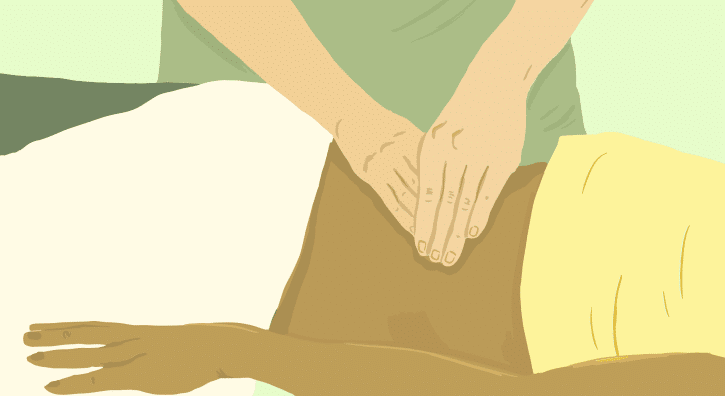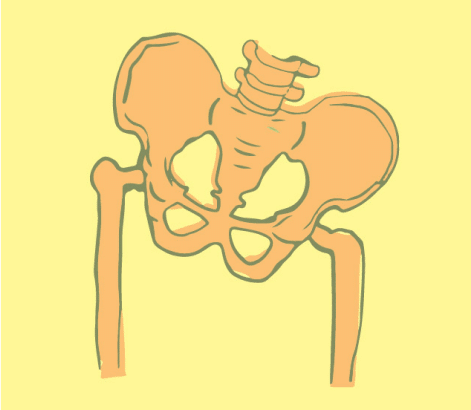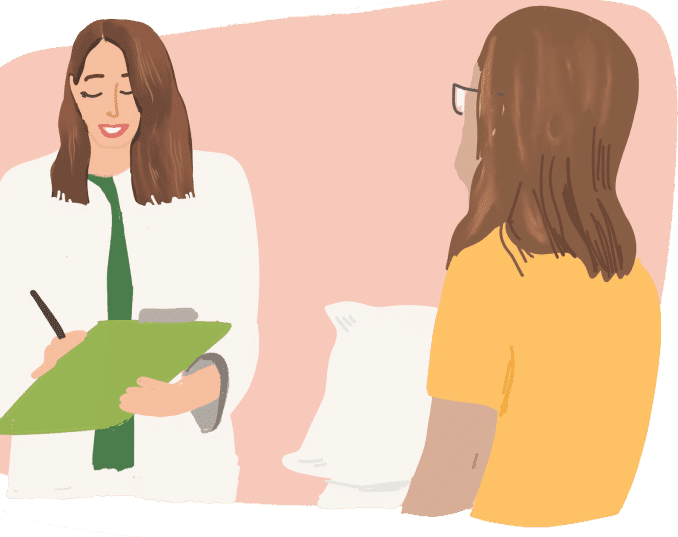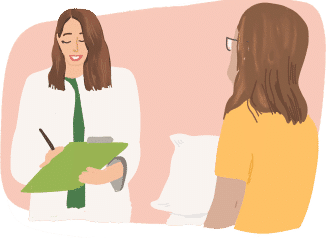

The term “sexual dysfunction” encompasses persistent or recurring problems related to desire, arousal, climax, or discomfort during sexual activity. Central to this aspect of human experience are the pelvic floor muscles. In men, these muscles contribute to the ability to maintain an erection, and in both sexes, they contract quickly and rhythmically at the moment of orgasm. Normally, they are pain-free and enhance enjoyment. But when pelvic floor dysfunction develops, it can lead to pain, discomfort, and a reduction in sexual satisfaction. This can be a deeply upsetting experience, but there’s hope—pelvic floor physical and occupational therapy is a proven therapeutic approach that can improve these symptoms and help people restore intimacy in their lives.
The Facts
- Pain during sex affects one in three women before menopause at some point in their lives.
- Erectile dysfunction is surprisingly common, with 15% to 72% of men under 40 acknowledging symptoms.
- For those aged 40 to 70, more than half—about 52%—experience mild to moderate erectile dysfunction.
- After a prostatectomy, erectile dysfunction is reported in up to 80% of men.
- An estimated 60% of menopausal women never tell their doctors about painful sex, often due to feelings of shame or discomfort.
- Medications such as birth control and acne treatments are among those that can cause vulvar pain and impair the body’s ability to lubricate naturally.
- 65% of women who have recently given birth continue to experience pain during sex 18 months after delivery.
The term “sexual dysfunction” encompasses persistent or recurring problems related to desire, arousal, climax, or discomfort during sexual activity. Central to this aspect of human experience are the pelvic floor muscles. In men, these muscles contribute to the ability to maintain an erection, and in both sexes, they contract quickly and rhythmically at the moment of orgasm. Normally, they are pain-free and enhance enjoyment. But when pelvic floor dysfunction develops, it can lead to pain, discomfort, and a reduction in sexual satisfaction. This can be a deeply upsetting experience, but there’s hope—pelvic floor physical and occupational therapy is a proven therapeutic approach that can improve these symptoms and help people restore intimacy in their lives.
The Facts
- Pain during sex affects one in three women before menopause at some point in their lives.
- Erectile dysfunction is surprisingly common, with 15% to 72% of men under 40 acknowledging symptoms.
- For those aged 40 to 70, more than half—about 52%—experience mild to moderate erectile dysfunction.
- After a prostatectomy, erectile dysfunction is reported in up to 80% of men.
- An estimated 60% of menopausal women never tell their doctors about painful sex, often due to feelings of shame or discomfort.
- Medications such as birth control and acne treatments are among those that can cause vulvar pain and impair the body’s ability to lubricate naturally.
- 65% of women who have recently given birth continue to experience pain during sex 18 months after delivery.
Symptoms
*Sexual Dysfunction in people with a penis
- Erectile issues can manifest in several ways: poor erection quality, inability to become or stay erect, and premature ejaculation.
- Men may also experience a loss of ejaculatory force or find themselves unable to ejaculate altogether.
- Urine leakage during climax, known as climacturia, may occur.
- Pain that follows ejaculation might affect areas such as the tip or shaft of the penis, the perineal region, or the scrotum.
- Changes in skin color in the penis, scrotum, or perineum may also be a concerning symptom.
Postpartum Sexual Dysfunction
- Breastfeeding can lead to decreased vaginal moisture
- Perineal discomfort due to healing from birth injuries like episiotomies
- Orgasm may be diminished or absent entirely
- Involuntary urination during intercourse or orgasm
- Sexual activity may remain painful long after delivery
*Sexual Dysfunction in people with vulvas/vaginas
- Limited or impaired vaginal lubrication
- Pain that occurs with entry, deeper thrusts, or throughout the entire sexual encounter
- Clitoral pain or hypersensitivity that makes touch uncomfortable
- Burning or painful symptoms following sexual engagement
- Orgasm that is less intense or entirely absent
- Urinary leakage occurring during sex
- Climacturia, which is involuntary urination during orgasm
Menopausal Sexual Dysfunction and Post-gynecologic cancer treatment
- Lubrication decreases as estrogen levels drop
- Penetration becomes difficult or impossible
- Pain may accompany intercourse and linger afterward
- Orgasmic sensation may lessen or cease completely
Symptoms
*Sexual Dysfunction in people with a penis
- Erectile issues can manifest in several ways: poor erection quality, inability to become or stay erect, and premature ejaculation.
- Men may also experience a loss of ejaculatory force or find themselves unable to ejaculate altogether.
- Urine leakage during climax, known as climacturia, may occur.
- Pain that follows ejaculation might affect areas such as the tip or shaft of the penis, the perineal region, or the scrotum.
- Changes in skin color in the penis, scrotum, or perineum may also be a concerning symptom.
*Sexual Dysfunction in people with vulvas/vaginas
- Limited or impaired vaginal lubrication
- Pain that occurs with entry, deeper thrusts, or throughout the entire sexual encounter
- Clitoral pain or hypersensitivity that makes touch uncomfortable
- Burning or painful symptoms following sexual engagement
- Orgasm that is less intense or entirely absent
- Urinary leakage occurring during sex
- Climacturia, which is involuntary urination during orgasm
Postpartum Sexual Dysfunction
- Breastfeeding can lead to decreased vaginal moisture
- Perineal discomfort due to healing from birth injuries like episiotomies
- Orgasm may be diminished or absent entirely
- Involuntary urination during intercourse or orgasm
- Sexual activity may remain painful long after delivery
Menopausal Sexual Dysfunction and Post-gynecologic cancer treatment
- Lubrication decreases as estrogen levels drop
- Penetration becomes difficult or impossible
- Pain may accompany intercourse and linger afterward
- Orgasmic sensation may lessen or cease completely
Associated Diagnoses
Diagnoses such as Endometriosis, Vulvodynia, Interstitial Cystitis/Painful Bladder Syndrome, Pudendal Neuralgia, Chronic Pelvic Pain Syndrome/Male Pelvic Pain, Lichen Sclerosus, Lichen Planus, Pelvic Floor Dysfunction, post-prostatectomy complications, and Genitourinary Syndrome of Menopause are all associated with sexual dysfunction and pelvic pain.

Associated Diagnoses
Diagnoses such as Endometriosis, Vulvodynia, Interstitial Cystitis/Painful Bladder Syndrome, Pudendal Neuralgia, Chronic Pelvic Pain Syndrome/Male Pelvic Pain, Lichen Sclerosus, Lichen Planus, Pelvic Floor Dysfunction, post-prostatectomy complications, and Genitourinary Syndrome of Menopause are all associated with sexual dysfunction and pelvic pain.


Causes of Sexual Dysfunction
- Pelvic pain syndromes associated with pelvic floor dysfunction (above)
- Childbirth
- Medications
- Obesity
- Cardiovascular disease
- Menopause
- Jelqing
- Genital mutilation, genital cutting
- Surgically-induced
- Pelvic Floor Reconstruction
- Prostatectomy
- Gender affirming surgery
- Episiotomy
- Vestibulectomy
- Pudendal Nerve Decompression
- Mesh excision
Causes of Sexual Dysfunction
- Pelvic pain syndromes associated with pelvic floor dysfunction (above)
- Childbirth
- Medications
- Obesity
- Cardiovascular disease
- Menopause
- Jelqing
- Genital mutilation, genital cutting
- Surgically-induced
- Pelvic Floor Reconstruction
- Prostatectomy
- Gender affirming surgery
- Episiotomy
- Vestibulectomy
- Pudendal Nerve Decompression
- Mesh excision

Diagnostic Challenges
Studies reveal a concerning trend: most medical professionals don’t feel confident discussing sexual topics with their patients, and patients, in turn, hesitate to bring up these concerns. This barrier is even more pronounced in LGBTQ+ communities, where discrimination remains prevalent and contributes to poor sexual health outcomes. It’s imperative for the medical field to rise to this challenge. At PHRC, we prioritize creating a safe, affirming space where all individuals feel empowered to speak openly about their pelvic and sexual health needs. Sexual health is now a recognized area of medical focus, and people experiencing difficulty can find real, effective support. Because sexual function is deeply tied to both the body and the mind, comprehensive care typically includes an interdisciplinary approach—combining medical interventions, mental health support, and expert pelvic floor physical and occupational therapy.
Diagnostic Challenges
Studies reveal a concerning trend: most medical professionals don’t feel confident discussing sexual topics with their patients, and patients, in turn, hesitate to bring up these concerns. This barrier is even more pronounced in LGBTQ+ communities, where discrimination remains prevalent and contributes to poor sexual health outcomes. It’s imperative for the medical field to rise to this challenge. At PHRC, we prioritize creating a safe, affirming space where all individuals feel empowered to speak openly about their pelvic and sexual health needs. Sexual health is now a recognized area of medical focus, and people experiencing difficulty can find real, effective support. Because sexual function is deeply tied to both the body and the mind, comprehensive care typically includes an interdisciplinary approach—combining medical interventions, mental health support, and expert pelvic floor physical and occupational therapy.
Treatment:
How We Can Help You

If you live in Los Feliz and have been struggling with sexual dysfunction, it may be time to seek a thorough pelvic floor physical and occupational therapy evaluation. This assessment can help uncover whether pelvic floor dysfunction is contributing to your symptoms. During your session, your physical and occupational therapist will take the time to discuss your health history in detail—including any previous diagnoses, treatments you’ve received, and your response to those treatments. We’re aware that many individuals from Los Feliz reach us only after dealing with months or even years of distress, and we aim to meet that frustration with understanding and expert care. The physical exam includes a close look at your pelvic muscles, joints, soft tissues, nerves, and body mechanics. After the examination, your therapist will share their findings and explain how your symptoms may have developed. You’ll then work together to establish realistic short-term and long-term goals for treatment. Most patients are seen once or twice a week for about 12 weeks and receive a home exercise plan to enhance in-clinic sessions. Your therapist may also coordinate with other specialists on your healthcare team. We’re here to help you reclaim comfort, confidence, and sexual well-being—so you can enjoy life to the fullest in Los Feliz.

Treatment:
How We Can Help You
If you live in Los Feliz and have been struggling with sexual dysfunction, it may be time to seek a thorough pelvic floor physical and occupational therapy evaluation. This assessment can help uncover whether pelvic floor dysfunction is contributing to your symptoms. During your session, your physical and occupational therapist will take the time to discuss your health history in detail—including any previous diagnoses, treatments you’ve received, and your response to those treatments. We’re aware that many individuals from Los Feliz reach us only after dealing with months or even years of distress, and we aim to meet that frustration with understanding and expert care. The physical exam includes a close look at your pelvic muscles, joints, soft tissues, nerves, and body mechanics. After the examination, your therapist will share their findings and explain how your symptoms may have developed. You’ll then work together to establish realistic short-term and long-term goals for treatment. Most patients are seen once or twice a week for about 12 weeks and receive a home exercise plan to enhance in-clinic sessions. Your therapist may also coordinate with other specialists on your healthcare team. We’re here to help you reclaim comfort, confidence, and sexual well-being—so you can enjoy life to the fullest in Los Feliz.
How Can We Help You?
Please use the form below to send us any questions or comments. You must include your e-mail address in order for us to send a response. Please be assured that all of your information will be kept confidential.

Join The Newsletter. Win a copy of our book, “Pelvic Pain Explained!”
We love getting to know our website visitors. Please tell us a little bit about yourself and get the latest info via PHRC e-newsletter!
*Subscribers automatically eligible to win our book, “Pelvic Pain Explained.”
At the heart of Pelvic Pain Explained is a powerful exploration of the patient experience—from the initial onset of pelvic pain, to the many challenges involved in receiving a proper diagnosis and accessing effective care, to the difficult decisions surrounding treatment choices, and the invisible yet significant impact such chronic pain has on one’s personal life and relationships.


